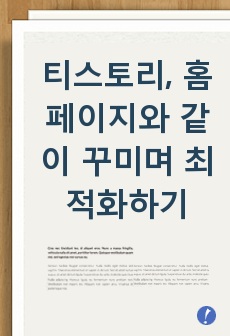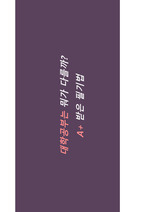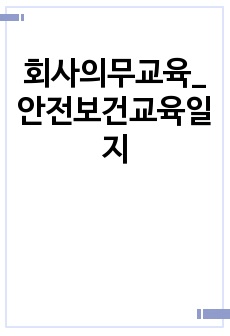공영방송 PD와 시청자간의 방송 공익성에 대한 인식 차이에 관한 연구
* 본 문서는 배포용으로 복사 및 편집이 불가합니다.
서지정보
ㆍ발행기관 : 청운대학교 방송예술연구소
ㆍ수록지정보 : 미디어와 공연예술연구 / 9권 / 2호
ㆍ저자명 : 장하용, 조명희
ㆍ저자명 : 장하용, 조명희
목차
1. 문제의 제기2. 이론적 배경
1) 방송 공익성에 대한 기존 논의: 규범적 공익성
2) 방송 공익성 구현과 프로그램의 관계: 실천적 공익성
3) PD의 방송 공익성 인식과 관계있는 요인: 경력과 장르1)
4) 미디어 생산자와 소비자의 인식적 괴리: PD와 시청자
5) 연구문제
3. 연구방법
1) 심층 인터뷰
2) 설문지 조사
3) 자료처리 및 분석방법
4. 분석결과
1) 방송 공익성에 대한 PD와 시청자의 인식
2) PD의 속성에 따른 방송 공익성 인식의 차이
3) 방송 공익성에 대한 PD와 시청자의 인식적 괴리
5. 논의 및 결론
참고문헌
<Abstract>
한국어 초록
이 연구 는 제작 PD들이 방송 공익성을 어떻게 인식하고 있는지, 그리고 방송 공익성에 대 한 PD의 인식이 시청자들과 얼마나 다르며, 이런 인식적 괴리에 어떤 요인이 개입하는 지를 알아보았다. 이를 위해 KBS의 제작 PD들을 대상으로 심층인터뷰를 실시해서 방송 공익 성을 구성하는 요인을 추출한 다음, 설문조사를 통해 이들에 대한 제작 PD과 시청자들의 평가 를 알아보았다.분석 결과, 규범적 공익성에 대한 PD와 시청자의 인식은 상당히 유사한 편이었다. PD와
시청자 모두 방송 공익성을 구성하는 요소로 ‘정치적 독립성’을 가장 중요한 요소로 꼽고 있었
다. 그러나 방송 공익성을 구현하기 위해서 제작 현장에서 필요한 요인들을 의미하는 ‘실천적
방송 공익성’에 대한 인식에서는 PD와 시청자 간에 유사성과 괴리가 함께 존재하는 모습을 보
이고 있었다. PD의 담당 장르와 경력은 방송 공익성에 대한 인식과 시청자와의 괴리 모두에게
복합적으로 작동하는 요인이었다. 경력이 짧은 드라마, 예능 PD와 오랜 경력의 시사교양 PD
는 방송 공익성을 서로 다르게 인식하며, 시청자와의 인식적 괴리에서도 동일한 경향이 나타
나고 있었다.
연구의 결과는 방송 공익성에 대한 PD들의 인식이 서로 다르며, 동시에 시청자들과도 상당한 인식적 괴리가 있음을 보여주고 있다. 따라서 방송사는 공익성의 개념과 구현 방법에 대한 내부적인 조정과 합의를 위해 노력해야 하며, 외부적으로는 수용자가 생각하는 공영방송 의 가치를 파악해서 제작진과 수용자 간의 인식 차이를 좁히는 것이 필요하다.
영어 초록
This study aims to investigate the Korean public broadcasting company(cf.KBS) producers’ perception of public interest. The concept of public interest is divided into two dimensions, ‘normative public interest’ and ‘on-site public interest’. This study also looks into the existence of gaps on the perception of public interest between producers and viewers, and the variables which have effects on thiese perceptual gaps. An indepth interview is conducted to find the constructing components of ‘on-site public interest’, and then a questionnaire survey is carried out with the KBS producers and viewers.The results shows that the perceptions of ‘normative public interest’ among producers and viewers are quite similar, but the significant differences on the perception of ‘onsite public interest’ are found. They both recognize that the important elements of public interest is political independence and autonomy in the production process, but they differ in the aspect of program contents, i. e. the producers pay more attention to the protection of minorities but the viewers emphasize more the importance of educational benefits. The producer’s career length and genre in charge are both played an important role in the perception of public interest. The producers who had short careers and in charge of drama and entertainment programs are different with other producers in the perception of ‘on-site public interest.
In conclusion, this study shows that there exist perceptual gaps among the producers and between viewers and the producers as well. These results imply the possible conflicts on the definition and its realization of public interest. The Korean public broadcasting company therefore needs to conciliate the concept of public interest among its producers, and makes various efforts to narrow the perceptual gaps between producers and viewers.


















